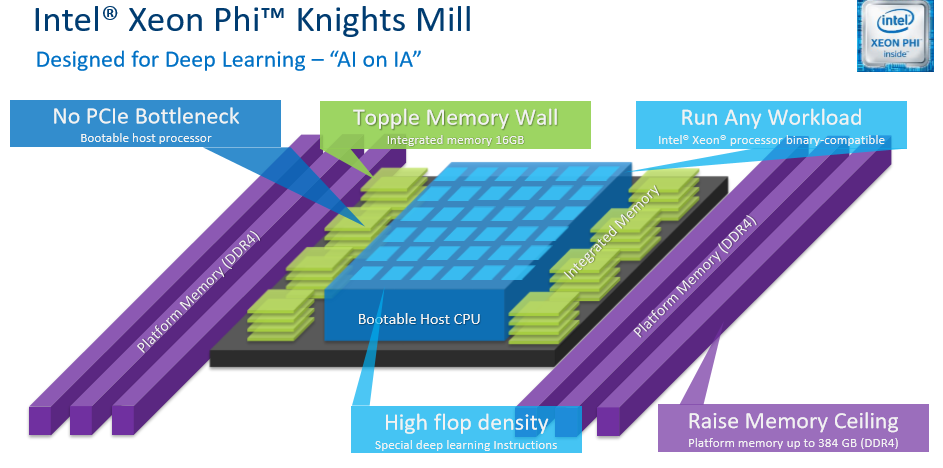Intel Axes Knights Mill, the Last of the Larrabee-Inspired Xeon Phi Products
According to an Intel update posted to its website, Xeon Phi, a series of processors that featured a radical new architecture for its time, has met its end. After a slow cadence of end of life (EOL) updates for the range of products designed for supercomputing and HPC, including the Xeon Phi 7200 Coprocessors, Intel has finally retired all of the descendants of its failed Larrabee GPU project.
Now it seems the mantle of high-performance acceleration falls to Intel's forthcoming Xe Graphics Architecture that is set to power the Aurora supercomputer.
Intel has now officially retired the 7295, 7285, and 7235 models that came with 72, 68, and 64 cores that dropped into the LGA3647 interface, with Intel citing that demand had shifted to other Intel products.



Knights Landing was the first product to come to market wielding Intel's new mesh topology, which connects 72 quad-threaded Silvermont-derived cores into one cohesive unit. The new mesh topology eventually filtered down into Intel's Purley, Skylake-X, and Cascade Lake processors. The Knight's Landing products featured 16GB of on-package MCDRAM (Multi-Channel DRAM) Micron HBM.
Intel’s followup Knights Hill products, which never came to market, have borne the blame for the delay of the Aurora supercomputer, which will now feature Intel’s Xe Graphics Architecture.



Intel claimed that Knights Mill's single- and half-precision support helped power up to 4x the deep learning performance of its predecessor. Xeon Phi provided direct access to (up to) 400GB of memory, a tangible advantage over GPU memory limitations.
Intel has set July 31, 2020, as the last date for shipments.
Get Tom's Hardware's best news and in-depth reviews, straight to your inbox.

Paul Alcorn is the Editor-in-Chief for Tom's Hardware US. He also writes news and reviews on CPUs, storage, and enterprise hardware.
